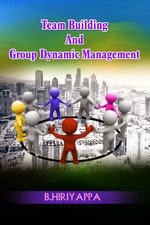Rights Catalogue 2014
Dr
B Hiriyappa
_____________________________________________________________________________
STRATEGIC MANAGEMENT AND BUSINESS POLICY
: For Managers and Consultants
Dr.B. Hiriyappa, Ph.D.
This book is divided into 29 chapters such as:
Business, Strategy, Strategic
Management, Vision, Mission, Environment Analysis,
Strategic Advantage
Analysis, Corporate Strategy, Michael Porter's Generic
Strategies,
Formulation Of Functional Strategy, Types Of
Strategies, Diversification,
Concept Turnaround, Retrenchment Divestment,
Liquidation Strategies
Matrix, Model Analysis, Value Chain Analysis,
Investment Level Strategy,
Strategic Alliances, Joint Ventures, Tailoring
Strategy, Six Sigma and more.
978-1604816730 8-1/2 X 11 370 pages All
rights available.
STRESS MANAGEMENT: Leading To Success
Dr.B. Hiriyappa, Ph.D.
"Stress Management: Leading to Success” book
divided into seven chapters:
1. Stress
2. Reasons For Stress
3. Types of Stress
4. Stress at Work Place
5. Manage Stress at Work Place
5. Stress Management Techniques
7. Stress Management : Leading To Success"
978-1475082654 8 x 10 126 Pages All
rights available.
TEAM BUILDING AND GROUP DYNAMIC
MANAGEMENT
Dr.B. Hiriyappa, Ph.D.
This book divided into eight chapters viz:
Team And Team Building, Team Functions, Team Effectiveness,
Understanding Group Behavior In An Organization, Team
Dynamics, Group
Development Stages Of Groups Formation, Types Of
Groups, Turning
Groups Into Effective Teams. This book useful to team
members, leaders,
CEO, Business Faculty and Students and managers.
978-1489546609 6 x 9 84 pages All rights available.
CORPORATE STRATEGY
Dr.B. Hiriyappa, Ph.D.
Corporate Strategy
Corporate
Strategy Formulation Implementation Process
Long
Term And Short Term Objectives
Michael
Porter’s Generic Strategies
Grand
Strategies Structures In Enterprise’s
Diversification
978-1463694630 8.5"
x 11" 46 pages All rights available.
BUSINESS
POLICY AND STRATEGIC MANAGEMENT
Dr.B. Hiriyappa, Ph.D.
Business Policy and
Strategic Management is the text book for higher studies of business school. It
is the tremendous importance of business policy formulation, implementation and
control and innovative development and growth of business in today's
competitive scenario. This book is useful to MANAGERS, CONSULTANTS, STRATEGIC
PLANNERS, BUSINESS DEVELOPMENT EXECUTIVES, CEO, MBA AND OTHER BUSINESS STUDENTS
AND FACULTY MEMBERS OF BUSINESS POLICY AND STRATEGIC MANAGEMENT. This book
presents an in-depth and comprehensive coverage of Business Policy and
Strategic Management. This book divided into 29chapters viz.:DILEMMA OF
BUSINESS, BUSINESS STRATEGY AND CORPORATE STRATEGY, INTERNAL ENVIRONMENT
ANALYSIS, MICRO AND MACRO ENVIRONMENT ANALYSIS, FRAMEWORK AND SCOPE OF
STRATEGIC MANAGEMENT, DEVELOPMENT OF VISION AND MISSION, NATURE AND SCOPE OF
CORPORATE STRATEGY, FRAMEWORK OF STRATEGIC ANALYSIS, GENERIC STRATEGIES,
FORMULATION OF FUNCTIONAL DEPARTMENTAL STRATEGY, GRAND STRATEGIES STRUCTURES IN
ENTERPRISES, DIVERSIFICATION STRATEGIES FOR ENTERPRISES, TURNAROUND,
RETRENCHMENT DIVESTMENT, AND LIQUIDATION STRATEGIES FOR ENTERPRISES, TOWS
MATRIX ANALYSIS, BCG MATRIX, ANSOFF'S MATRIX, ADL MATRIX, THE GENERAL ELECTRIC
MODEL, PORTER'S FIVE FORCES MODEL AND MCKINSEY'S 7'S FRAMEWORK, VALUE CHAIN
CONCEPT ANALYSIS, VERTICAL INTEGRATION AND STRATEGIC ALLIANCES, ACQUISITIONS
AND JOINT VENTURES, TAILORING STRATEGY ANALYSIS, STRATEGY FOR FRAGMENTED
INDUSTRIES, STRATEGIC CHANGE MANAGEMENT, STRATEGIES FOR COMPETING IN GLOBLIZING
MARKETS, CORPORATE CULTURE AND LEADERSHIP, STRATEGIC CONTROL SYSTEMS, MATCHING
STRUCTURE AND CONTROL ANALYSIS, STRATEGY IMPLEMENTATION AND CONTROL, BUSINESS
PROCESS REENGINEERING AND BENCHMARKING, SIX SIGMA AND MANAGEMENT and CONTEMPORARY
STRATEGIC ISSUES.
978-1448604333 7" x 10" 496 pages All rights available.
MANAGEMENT
OF MOTIVATION AND ITS THEORIES
Dr.B. Hiriyappa, Ph.D.
Introduction To Motivation
Determinants
Of Motivation
Five
Concepts In Work Motivation
Motivation
And Rewards
Theories
Of Motivation
978-1466370807 7" x 10" 38 pages All rights available.
STRATEGIC
PLANNING
Dr.B. Hiriyappa, Ph.D.
Corporate Strategy
Corporate
Strategy Formulation Implementation Process
Long
Term And Short Term Objectives
Michael
Porter’s Generic Strategies
Grand
Strategies Structures In Enterprise’s
Diversification
978-1466301979 7"
x 10" 64 pages 978-1466301979
All rights
available.
STRATEGIC
ANALYSIS
Dr.B. Hiriyappa, Ph.D.
Strategic Analysis
Situational
Analysis
The Methods
Of Industry And Competitive Analysis
Strategic
Groups
SWOT
Analysis
TOWS
Matrix Analysis
BCG
Matrix
978-1463793579 7"
x 10" 56 pages All rights available.
TEAM
BUILDING AND GROUP DYNAMIC
Dr.B. Hiriyappa, Ph.D.
TEAM BUILDING AND GROUP DYNAMICS is
useful to manager, team leaders, business executives, business development
managers, chief executive officers, business students, management consultants,
strategic planner, MBAs and who is working in a team.
This
book contains the following issues which are relevant to team management:
Importance
of team define, Team intention & scope, Features of successful teams, Basic
team rules, Team meeting responsibilities, What is a good team?, Team
functions, Team management, Definition of team management, Team effectiveness,
Understanding group behavior in an organization, What is a group?, Features of
a group, Characteristics of a mature group, Types of work groups, Team
dynamics, Importance of group dynamics, Group norms, Group cohesiveness,
Factors influencing group cohesiveness, Group development / stages of group's
formation, Types of groups, Advantages of group decisions, Disadvantages of
group decisions, Effectiveness and efficiency of group decision making,
Techniques for improving group decision making, Turning groups into effective
teams and Developing and managing effective teams
978-1456308094 7"
x 10" 56 pages
All rights
available.
CHANGE
AND CONFLICT MANAGEMENT
Dr.B. Hiriyappa, Ph.D.
Nature of Strategic Change Management
Organizational
Politics and Power
Organizational
Conflict
Implementing
Strategic Change: Steps in the Changing Process
978-1466316447 6" x 9" 30 pages
All rights
available.
